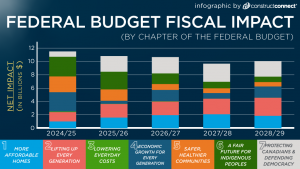A proposal to require developers in the City of Victoria to set aside a good chunk of affordable rental units in all new condo projects is meeting resistance from groups representing residential builders.
They say it will have far-reaching consequences for the supply of housing and merely result in higher costs for consumers.
“At the end of the day, it’s the consumers who will pay,” said Casey Edge, executive director of the Victoria Residential Builders Association (VRBA). “The government likes to say the developers are paying, but like the manufacturer of any product, the end cost is always paid by the consumer, the homeowner.”
Under the proposed “inclusive housing” policy, between 10 and 15 per cent of units in new Victoria condo projects would have to be built as affordable rental units. City staff say the idea is to provide housing in new strata developments for working people who are being priced out of the city’s housing market.
The proposal would allow developers of projects with fewer than 40 units to make a cash contribution in lieu of including affordable units, but in projects of 40 units or more, affordable units would be required.
This proposed policy could have significant negative implications on both supply and affordability
— Kathy Hogan
Urban Development Institute
Staff recommended that city council consider the policy and direct them to hold more consultations with stakeholders, adopt the affordable housing targets and levels of affordability, and further explore pre-zoning.
However, that’s not going down well with groups representing the residential builders. The VRBA maintains government is shirking its responsibility.
“It’s just another tax on development and providing a subsidy to what is really the government’s responsibility,” said Edge. “The government created the problem and they treat housing as a cash machine.”
The policy, he explained, would merely add another layer of expenses to those already incurred by residential builders in erecting condos which, in the end, would ultimately be passed on to consumers.
“You have layer upon layer upon layer of government regulation and now they say, ‘By the way, we want you to pay for affordable housing as well,’ while they sit on all sorts of vacant land that they won’t develop.”
Edge said the provincial and federal governments and municipalities like Victoria and the District of Saanich on Vancouver Island have plenty of vacant land but, instead of building affordable housing themselves, insist on transferring the responsibility and cost to private-sector residential builders to pick up the slack.
The province brings in $2 billion annually from property transfer taxes and millions more from building permit fees, and the Canadian government makes billions off the GST, yet they expect residential developers to foot the bill for building affordable housing units, said Edge.
“So, what you’ve got is the government using the mortgages of new homebuyers to subsidize their responsibility, which is creating affordability,” he said.
Anne McMullin, president and CEO of the Urban Development Institute (UDI), a non-profit association for the real estate development industry, said developers want more consultation because if the rules are too restrictive developers just won’t build any more, which would only add to the problem the city is trying to solve.
“It’s got to be economically feasible,” she said. “You can’t keep on piling on more regulations without some sort of incentives. Otherwise, it just won’t get built.”
Developers recognize some of the units in their buildings will have to be for affordable housing, but they need to know what the rules are before they decide on projects and put shovels in the ground, said McMullin, who noted it’s still unclear what the percentage figure will end up being for affordable housing.
A concern, she said, is that the rules are being changed mid-stream, just as builders are beginning to make money.
“It seems that when it becomes economically feasible and developers are starting to make some money, then municipal governments want to claw back and then it doesn’t make it economically feasible,” she said. “That’s the problem.
“The whole point is to get more rental, but if it makes it more-costly for developers to build then they won’t build it at all.”
The UDI has submitted a letter to Victoria council, indicating it supports the vision of improving housing affordability, but feels that further collaboration is needed to ensure the policy is successful in achieving its goals.
The letter, from Kathy Hogan, executive director of the UDI capital region branch, states there are “significant concerns” about some of the economic assumptions that were used to support the policy recommendations.
Additional consultation is needed with developers and affordable housing providers, she wrote, to ensure it will be possible to effectively operate and manage affordable units built under the proposed policy.
“This proposed policy could have significant negative implications on both supply and affordability in the City of Victoria should this policy be approved in its current form.”











Recent Comments
comments for this post are closed